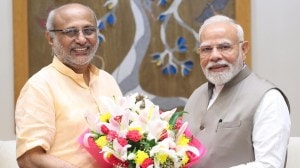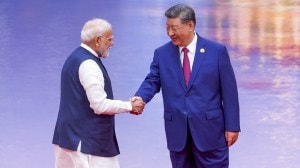Stay updated with the latest - Click here to follow us on Instagram
The Chronicler
<i>Dominique Lapierres latest book,A Rainbow in the Night,salutes the unsung heroes of South Africa and,of course,Nelson Mandela</i>
Dominique Lapierres latest book,A Rainbow in the Night,salutes the unsung heroes of South Africa and,of course,Nelson Mandela
In every country,theres a story waiting to be told,and French writer Dominique Lapierre has narrated a fair share of these in books like Is Paris Burning?,O Jerusalem,Once Upon a Time in the Soviet Union,New York Burning and,the India oeuvre Freedom at Midnight,City of Joy and Five Past Midnight in Bhopal. The feisty 78-year-old still chases a good story just like he used to in his early days as a reporter in Paris Match. Yet,it was chance rather than instinct,that led him to South Africa,the subject of his latest work A Rainbow in the Night (Full Circle,India,Rs 275) ,which will be launched in Delhi on Monday.
Five years ago,I was in Kolkata when a Frenchman asked me if I wanted to meet a South African Mother Teresa, he recounts. She turned out to be Helen Lieberman,a white woman who had saved thousands of black children at a risk to her own life- she could have been killed by the white police or,just as easily,by the blacks. Lapierres initial plan was to tell the story of her heroism but the writer realised that the people of the new country had made an epic journey,from tranquillity to brutal oppression,to a final freedom underscored by extraordinary courage and forgiveness.
With his sharp narrative style that combines investigative journalism with history and pop storytelling,Lapierre introduces the whole lot of people who played a role in South Africa. Apart from Lieberman,there is Dr Christiaan Neethling Barnard,who performed the worlds first heart transplant in South Africa. Interestingly,he put a black persons heart into a white mans chest, says Lapierre,This was a time when a dying white man had the choice to refuse being infused with the blood of a black person.
It isnt only about heroes. Lapierre devotes space to Dr Death Wouter Basson,who was commissioned by the government to create toxic substances to kill black people. These were mixed into beer,chocolates and cigarettes and sold in black neighbourhoods. There is no estimate of the numbers that died, says Lapierre.
He spent two years in the country,conducting interviews,poring through documents at the National Archives and visiting Mandelas cell in Robben Island. As a result,the book does what Lapierre aims with all his writing – make the reader enter into the story,body and soul. If it is hot,he must feel hot, he says.
The writer is donating a part of the proceeds from his book to Liebermans NGO called Ikamva Labantu. Now,I have one foot in South Africa and one in India, says Lapierre,who is off to West Bengal where he works on most of his humanitarian projects . At my welfare centre in Bengal,we have just cured the 75,000th TB patient and educated the 10,000th girl student, he says proudly.







